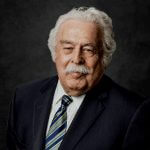No Time To Lose
Award: $1.2 million
Case Synopsis
Case Type:
Malpractice
Injury:
Breast Cancer
Defendant:
Hospital/Clinc
Length of Case:
1 year
Case Attorney
 Sanford Rosenblum
Sanford Rosenblum
What makes this case unique:
Six other attorneys had turned the client down, her likeness was later used to promote client rights.
Mary Hannan, a retired school teacher, approached our law firm asking that we sue her doctor for medical malpractice. When she came to talk to us, she had already talked to six other lawyers. Each one of them had reviewed her claim of malpractice and turned her down. No one would take the case.
Mary looked like a prototypical schoolteacher from a small town in northern New York. She was slight of build and despite her illness and treatment for breast cancer looked remarkably well. She was very kindly, and soft spoken, and I could well imagine what a loving and effective teacher she had been for her many students. She had several grandchildren who clearly were the love of her life and whom she wanted to endow with any award I might manage to get for her.
Mary claimed there was a delay in the diagnosis of her breast cancer, which allowed it to spread. Had it been diagnosed earlier, she insisted, it could have been treated sooner, more aggressively, and with a better outcome.
The facts were pretty simple. She had discovered a lump in her breast and went to her doctor. The doctor didn’t think it was cancer, stating it was too small to worry about and likely benign. Four months later, she went back and the doctor changed her mind. It was cancer.
At the time she began seeking legal representation, the cancer had been arrested. But the other lawyers turned her down because the delay in diagnosis was only four months. For cases involving a breast cancer diagnosis, most attorneys consider malpractice to be a delay of at least a year. The general understanding was that a year delay puts the patient’s life in jeopardy.
We obtained the X-rays and mammograms from the first diagnosis. Then we compared those to the images from the second diagnosis, when it was determined to be cancer.
Upon comparing the images, we picked up on something that no one else noticed. During those four months, the lump had doubled in size. We brought these mammograms and her general medical history to a highly regarded oncologist who specialized in breast cancer at NY Cornell Hospital.
This person had trained and practiced in Britain before coming to the U.S. Here he developed a practice for breast surgery for women who had suffered from breast cancer. He agreed with the interpretation we gave to the mammograms, which we had also had reviewed by a radiologist in Troy. He was willing to testify that because the cancer had doubled in size, a delay of four months was significant. He agreed with our conclusion that although brief, the delay threatened her life.
We sued, and while in suit, the breast cancer returned.
The case was tried in Federal Court because the physician had moved out of state. This gave us Diversity of Citizenship Jurisdiction. A citizen of one state making a claim against a citizen of another state can sue in Federal Court.
The trial lasted one week. There were the usual experts on both sides, but the jury was impressed with the fact that the lump had doubled in size in such a short time. The jury awarded Mary $1.2 million. It should have been the end of her legal troubles, but it wasn’t.
That was in April.
During the trial, we had a doctor testify that, with the return of her cancer, Mary now had only about six months left to live.
In May, the defendant’s insurance company filed a motion to dismiss the case. The judge overseeing this motion was made aware that our client had very little time left. One would assume he would make a quick decision.
But June came and there was still no decision. Then July.
I wrote to the judge asking to expedite the decision, which attorneys rarely do. Under normal circumstances, you want a judge to take the necessary time to consider the facts. But Mary wanted to give the money to her grandchildren while she was still alive, and we were running out of time for that to happen.
Interestingly and unfortunately, we were able to track down the judge. We heard through the grapevine that he was seen in Saratoga at the race track. Clearly, his priorities and ours were different. It might be some time before we could expect a decision on the Defendant’s Motion against the verdict. While we were confident that the verdict would be upheld, time was against us,
At that point we were left with few options. As much as we hated to do so, we asked and received Mary’s permission to accept a compromise settlement. After a speedy negotiation, they settled for $1 million.
Although Mary and her husband knew the delay would not likely change the outcome of the case, they accepted a $200,000 reduction in order to put it all behind them and give Mary her dying wish.
As a footnote, the NY State Bar Association picked up this case and used it in advertising for client’s rights. They made a poster with a profile of Mary that explained the rights a client has with his or her attorney. So ironically, despite Mary’s unfortunate treatment by the court, her name was perpetuated as part of her legacy.









